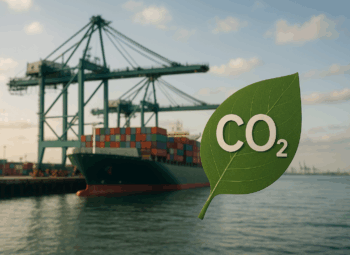Introduction: Modern Mental Health and the Supply Chain
Business leaders now face two connected pressures: deliver reliable global supply chains and respond to growing concerns about employee mental health. Modern mental health issues, including chronic stress, burnout, and climate anxiety, affect productivity and decision making across procurement, operations, and compliance teams. Organizations that reduce environmental impact and provide transparent, ethical supply chains also reduce stressors that compound mental health risks.
Decisive action on carbon neutral supply chains can improve workforce morale, reduce compliance anxiety, and increase investor confidence. This post draws on case studies of global companies going carbon neutral and gives practical, benefit-driven steps procurement and supply chain leaders can use today.
Research Output: -1760420438
Section 1 — Why Carbon Neutral Supply Chains Matter Now
Business, compliance, and human impacts
Customers and regulators now expect measurable emissions reductions across product lifecycles. Failure to act raises regulatory risk and exposes companies to reputational damage.
Beyond compliance, supply chain decarbonization improves workplace resilience. Teams that manage simpler, transparent supplier networks experience lower stress during disruptions. Clear emission targets and verified supplier practices reduce uncertainty and decision fatigue.
- Reduce regulatory and litigation risk through verifiable emissions claims
- Improve operational resilience by streamlining supplier base and data flows
- Boost employee well-being by removing ambiguity around supplier compliance and sustainability
Section 2 — Case Studies: Global Companies Going Carbon Neutral
Contextual lessons from market leaders
Large corporations set clear targets and adjust procurement strategy. These examples show what works and what to avoid.
Microsoft — Carbon negative by 2030
Microsoft commits to go carbon negative across its operations and supply chain by 2030. The company invests in renewable energy, electrifies logistics, and funds carbon removal projects.
Key takeaways:
- Use internal carbon pricing to drive supplier investment decisions
- Prioritize high-impact suppliers and facilities for rapid emissions reduction
- Invest in scalable carbon removal when hard-to-abate emissions remain
Google — 24/7 carbon-free energy by 2030
Google targets carbon-free energy on an hourly basis at all campuses. The company works closely with energy suppliers and local grids to match consumption with clean energy production.
Key takeaways:
- Align procurement timing and production schedules with renewable availability
- Engage utilities and suppliers to secure cleaner energy across the value chain
- Leverage advanced data to monitor energy use and emissions in real time
IKEA — Becoming climate positive
IKEA pursues a climate-positive strategy that reduces more greenhouse gases than its value chain emits. It invests in circular design, supplier efficiency, and renewable materials.
Key takeaways:
- Design products for reuse and lower material intensity
- Collaborate with suppliers to scale low-carbon materials
- Apply lifecycle analysis to prioritize interventions with highest impact
Section 3 — Factory Verification and Supplier Due Diligence
Practical verification steps for sourcing teams
Verification prevents greenwashing and supports credible carbon neutral claims. Use a multi-layered approach that combines documentation, on-site verification, and performance monitoring.
Actionable steps:
- Establish clear emission boundaries for suppliers (scope 1, 2, and relevant scope 3)
- Require certified energy and emissions data (ISO 14064, GHG Protocol alignment)
- Perform factory verification audits focused on energy use, fuel sources, and waste management
- Use remote monitoring and satellite data for ongoing validation between audits
- Incentivize supplier upgrades with capacity-building and co-investment programs
Practical example: a mid-sized manufacturer reduced scope 2 emissions by 40% in 18 months after a buyer funded a rooftop solar installation and contractually required energy performance monitoring. The buyer achieved verified emissions reductions in its supply chain while the manufacturer lowered operating costs.
Section 4 — Production Optimization to Cut Emissions and Costs
Operational levers procurement and production teams can pull now
Production optimization drives faster emissions reductions and often delivers cost savings. Focus on process efficiency, materials, and logistics.
- Optimize production scheduling to reduce changeovers and idle time
- Substitute high-carbon materials with lower-impact alternatives
- Improve maintenance and machine efficiency to lower energy demand
- Consolidate shipments and move freight to lower-carbon modes
- Use predictive analytics to balance inventory and reduce waste
Example: a construction materials buyer simplified SKU complexity and achieved a 12% reduction in transport-related emissions by combining orders and using rail for long-haul shipments.
Section 5 — Roadmap: Implementing a Carbon Neutral Supply Chain
Five-step practical action plan
Use this roadmap to move from aspiration to verified results. Each step includes measurable outputs and short timelines.
-
Baseline and prioritize
Measure supplier emissions and map hotspots. Focus first on the top 20% of suppliers that create 80% of emissions.
-
Set targets and contractual requirements
Create clear, time-bound supplier targets and embed them in supply agreements and RFPs.
-
Verify and upgrade
Conduct factory verifications and fund or co-develop emission reduction projects with key suppliers.
-
Monitor and report
Implement systems for ongoing data collection and third-party assurance for emissions reports.
-
Scale and communicate
Share validated results with customers, investors, and employees. Use verified wins to expand supplier programs.
Key features to include in any corporate program
- Clear governance and cross-functional teams including procurement, operations, EHS, and legal
- Supplier capacity-building and financial pathways for upgrades
- Robust data systems for emissions tracking and third-party verification
- Integration of scope 3 emissions into procurement KPIs and supplier scorecards
- Employee wellbeing programs linked to sustainability transitions to manage change and reduce stress
Conclusion — Benefits Delivered
Companies that pursue verified carbon neutral supply chains gain multiple benefits. They reduce regulatory exposure, lower operating costs, and improve market access. They also decrease organizational stress and improve mental health by creating predictable, transparent supplier networks.
Leaders who act now convert sustainability into a competitive advantage and demonstrate measurable stewardship for workforce welfare and planetary health.
Next steps and contact
If you plan to verify suppliers, optimize production, or develop a carbon neutral roadmap, start with a prioritized supplier audit and a short-term pilot for one product line. Track results monthly and scale quickly where you see returns.
Contact our team to discuss a tailored roadmap and verification program: https://theprimesourcing.com/#contact





